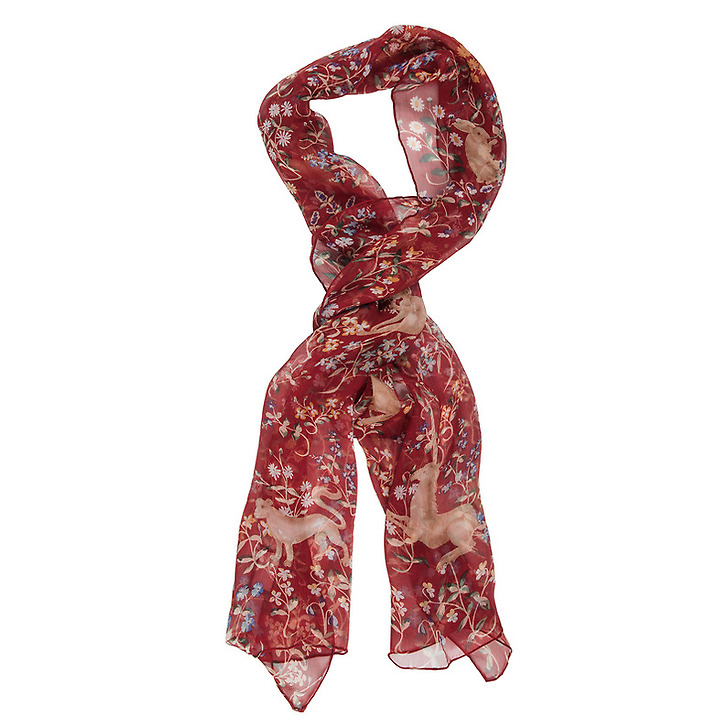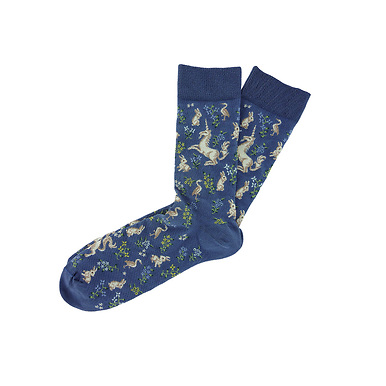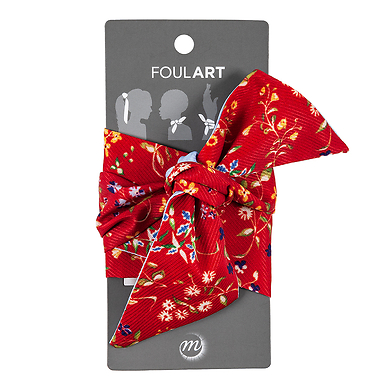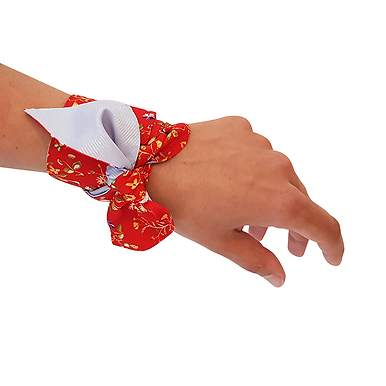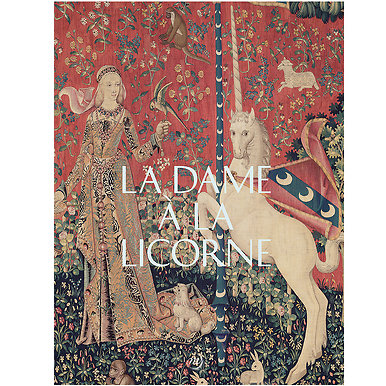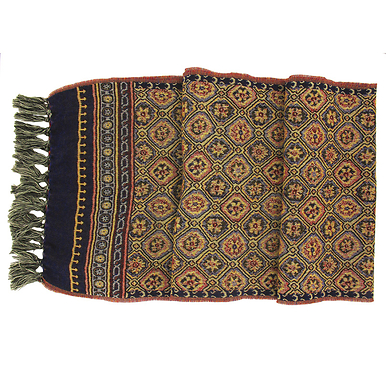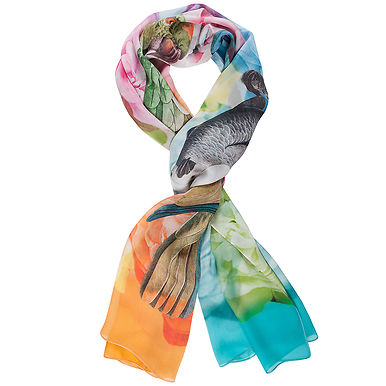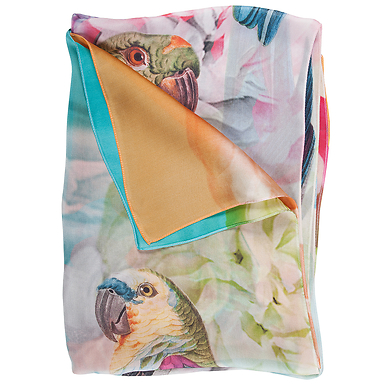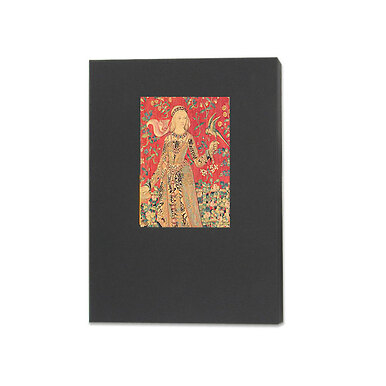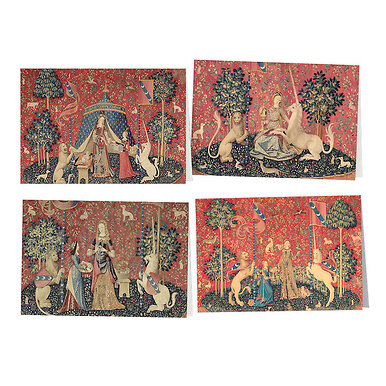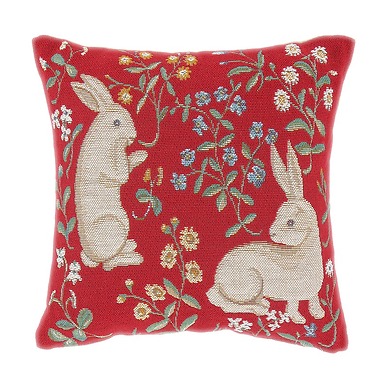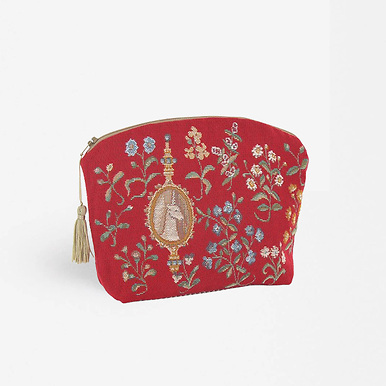This stole features a detail from the famous Lady and the Unicorn tapestry on display at the Musée de Cluny.
Tapestry "Lady of the Unicorn" ( circa 1490 ) Paris Musée national du Moyen Âge - Thermes de Cluny
A splendid vermeil-red background forms the decor of each of the Lady of the Unicorn tapestries. This famous tapestry, commissioned by Jean Le Viste, a member of a wealthy Lyonnais family, is one of the museum's masterpieces of weaving. The six tapestries illustrate the five senses through sumptuously adorned young women. The scenes are set against a scattering of cut millefleurs, like bouquets thrown on the ground in front of processions or in noble homes. Presented like a herbarium, these simple flowers, which include mint, daisy, violet, carnation and periwinkle, evoke the domestic and courtly gardens of the late Middle Ages.
Finishing: Hand-rolled hem. Hand-rolled hemming is a refined hemming technique based on the skills of hand sewing. The craft of hand-rolling, once widespread in France, is now disappearing. Only a few well-known brands still practice it.
To find out more about the work
Where is the Lady and the Unicorn tapestry?
The famous Lady and the Unicorn tapestry is housed at the Musée de Cluny - Musée National du Moyen Âge, in the 5th arrondissement of Paris. Acquired by the museum in 1882, it now benefits from a specially designed exhibition room showcasing its six monumental tapestries. Following a major restoration campaign and the renovation of the museum, the works are now presented in optimal conservation conditions, allowing visitors to fully admire the richness of their colors and the finesse of their execution.
Why is the Lady accompanied by a unicorn?
The presence of the unicorn at the Lady's side reveals a profound symbolism. According to medieval beliefs, this fabulous animal embodies chastity and mystical love, and only a pure young woman can approach it. In each scene, the unicorn accompanies the Lady, bearing the Le Viste family coat of arms or participating in the allegory of the senses, illustrating the refined codes of 15th-century courtly love.
What is the symbolism of the Lady with the Unicorn?
The symbolism of the Lady with the Unicorn unfolds on several levels, illustrating the intellectual wealth of the late Middle Ages. The work presents a refined allegory of the five senses, magnified by a thousand-flower décor, while the sixth tapestry, bearing the motto "À mon seul désir" ("To my sole desire"), brings a deeper spiritual dimension.
The vermeil-red background, dotted with flowers and animals, creates a symbolic walled garden where the Lady moves between the lion and the unicorn, embodying masculine strength and feminine purity respectively. The last tapestry, with its azure-blue pavilion and renunciation of jewelry, illustrates the elevation of the soul according to the writings of Marsilio Ficino, reflecting the quest for balance between earthly pleasures and spirituality characteristic of medieval thought.
Who is the woman depicted with the unicorn?
The woman depicted in the Lady with the Unicorn hanging is an idealized allegorical figure embodying medieval feminine beauty, with her lily complexion, ruddy lips and golden hair. Although commissioned by the Le Viste family, she is not the portrait of any member of that lineage. She appears in the six tapestries in different finery, while retaining her delicate features, to represent the five senses and a spiritual dimension in the tapestry "À mon seul désir". Her setting, in a paradisiacal garden alongside a unicorn symbolizing purity, is in keeping with the tradition of courtly love celebrating the noble and virtuous woman.

